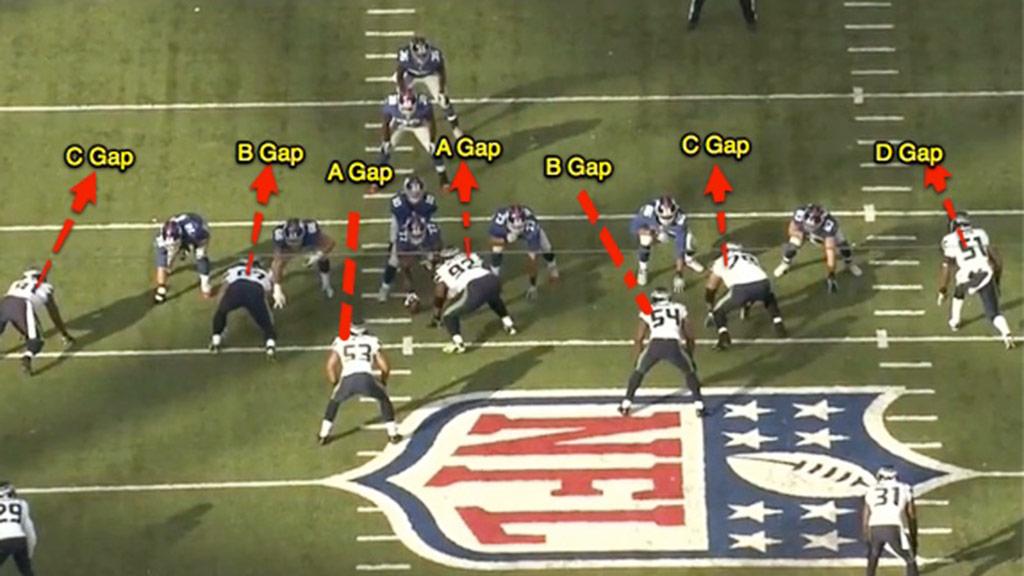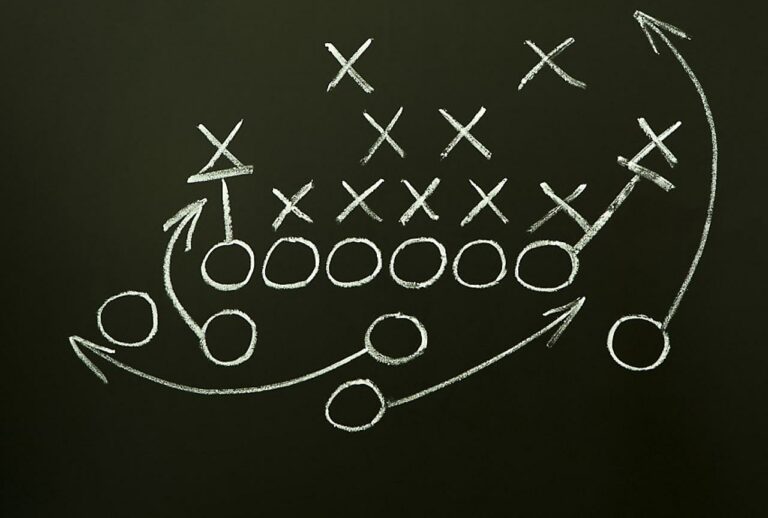Remember those lectures in school when towards the end, the teacher would look up to ask if anyone had any questions, to which most students sat with drool on their chin? Most of the time, almost no one cared about the subject, or paid any attention to the material, and the other small percentage of those who kept up, had no clue what the teacher was talking about.
Whether it was algebra, or poetry, I was always that confused kid. I had no idea what the Pythagorean theorem was, or how to recognize iambic pentameter. Unfortunately, in my confusion, I was always afraid to ask the teacher for help because I was afraid of asking the dreaded “stupid question.”
When it comes to football knowledge, I’ve noticed that fandom can be a similar experience.
It’s a very “that’s a stupid question” atmosphere. Generally if you aren’t a former player or coach, or live and breathe football, you can be talked down to because of your knowledge (or lack thereof) of the Xs and Os.
I like to believe I have a decent, intermediate grasp of football concepts. I’ve never played in an organized game, but between my countless hours of studying the game, conversing with those who know more than I do, and various other methods, I’ve garnered quite a repository of information.
Throughout the next few months leading up to training camp, I’m going to do a massive deep dive into the Xs and Os of football, because I want to learn and understand more of the game. When someone says, “that was such a stupid play call” or, “I’m standing 3,000 miles away and even I could’ve told you that’s the play they were going to run,” or even, “I can’t believe we just drafted him,” I want to understand why.
Since I’m doing this deep dive, I figured it might be fun to share the knowledge I’ve gained in a way that would allow readers to come along on this journey with me, to get a better understanding of the game in real-time. It is my hope that when this series is done, I’ve given readers a much better understanding of the game, its fundamentals and concepts relating to the Cowboys’ offensive and defensive schemes.
What I want you to remember is that this is a learning opportunity for everyone, including me. If I say something wrong in a lesson, please don’t hesitate to reach out to me on Twitter, or leave a comment noting the mistake so that we can correct it. I’d love to hear from you!
Given all of the attention that the defensive side of the ball got this draft season, I’m going to start there. I’ll begin with the absolute basics, and work my way up.
So sit back, relax, and enjoy the ride!
Lesson 1: Gaps and Techniques
Throughout my research, I’m learning that at its core, run defense is simply a way to fill any holes that the running back can run through. This could be a hole produced by the center and guard, where they push their opposing defensive linemen out of the way to produce a running lane for the tailback. It could also be a lane on one side of the offensive line completely, where the quarterback tosses the ball laterally to the running back, who then simply runs as fast as he can around the line to gain as many yards as possible.
Regardless of where the offense is trying to create a running lane, the defense’s job on any given run play is to rally to the ball carrier in an organized fashion in attempts to clog all possible holes the running back can take.
Let’s Introduce a Most Fundamental Football Concept: Gaps.
The following image shows the basic gaps that every system is based around:

This should come off as a fairly simple image to digest. For each letter, there exists two gaps depending on which side of the offensive line you’re on. I’ve come to learn that these gaps are the fundamental building blocks behind defensive plays, formations, and schemes.
As mentioned before, the defense’s job on a run play is to clog each of these gaps, in an attempt to disallow the running back any space to break through the line of scrimmage.
Based on the defensive scheme that you run, you (as a defensive player) will have a certain pre-snap responsibility as to which gap you are responsible for filling. For example, say you are a defensive lineman who lines up in the A gap pre-snap. Your job on this run play is now to cover that gap, and restrict the running back’s ability to run through that hole.
This Brings Me to My Next Concept: Techniques.
When you look at an offensive line, 99% of the time they line up in the same way. You’ll have your left tackle, left guard, center, right guard, and right tackle. Any alignment from there by the offensive skill players is variable. Because this alignment by the offensive line is consistent, defensive schemes are based around positioning defensive players around the offensive linemen to ensure adequate gap penetration for the play.
In order to do that, defensive coordinators scheme their defensive line and linebackers to pre-snap determinations as to which gap they are responsible for, as noted earlier. To do this, defensive linemen are positioned in what’s called “techniques,” which can be thought of as a way to start the play in a position of strength, for the defensive lineman, to ease his gap responsibility.
The image below shows these numeric techniques:

You may have heard phrases such as “1-technique” or “3-technique;” this is where those terms come from.
You also may have heard of a “nose tackle;” this is derived from the fact that this player lines up nose-to-nose with the center. So in the case of determining his technique, he would be a 0-technique.
The 4-3 defense loosely utilizes three different types of these techniques: the 1, 3, and 5 technique. Depending on the type of 4-3 formation or offensive personnel, there are certainly variations. But we’ll save that for later.
Combine Gaps & Techniques for the Foundation of the 4-3 Defense.
If you count the number of gaps in the first figure above, you’ll notice that there are eight total, four on each side of the center. In the 4-3 defense, you’ll have four defensive linemen and three linebackers. These seven players are each responsible for filling a single gap in the course of the play. In the first image above, you would likely see a safety “cheat” down to the line of scrimmage to cover that eighth gap.
Generally, each player is given a particular gap responsibility before the play starts. For example, the 1-technique is responsible for the A gap that he is positioned in, while the 3-technique has to maintain his B gap. So how does the 3-technique’s A gap get filled? This is where the linebacker’s job comes in.
The middle linebacker in this case would be responsible for filling this gap. The following picture shows this in action:

Don’t get hung up on the formation as I just want you to note that each player is given a gap assignment. We’ll cover this formation (4-3 under) in a future post.
This type of gap scheme is called a “1-gap” concept, because each player is responsible for a single gap over the course of the play. Conversely, the 3-4 defense is known as a 2-gap scheme. There are 4-3 defensive formations where, depending on the side of the line you play, you have either a 1-gap or 2-gap assignment. But we’ll stick to the basics of the 4-3, 1-gap concept for now.
Combining this gap concept with the technique alignments provides the fundamental building blocks for any defensive formation and play. From here, we can scheme up blitz packages, coverage schemes, etc… to try to force confusion and quick decision-making from the offense.
In my next post, I’ll review the “base 4-3 over” formation, how it uses gaps and techniques to align players pre-snap, and how it chokes run plays to allow as few yards as possible.
I hope you’ve enjoyed reviewing these ideas with me as much as I’ve enjoyed writing them up. As I mentioned at the start of this article, I’ll continue to push these out as my knowledge expands from the various lessons I learn.
Feel free to drop a comment below, or reach out to me on twitter @TheLandryTrophy. I’ve also gotten a ton of insight from @JoeyIckes, who I strongly encourage you follow!

Dude!!! This is amazing and I’m looking forward to reading more in this series. Well done!!!